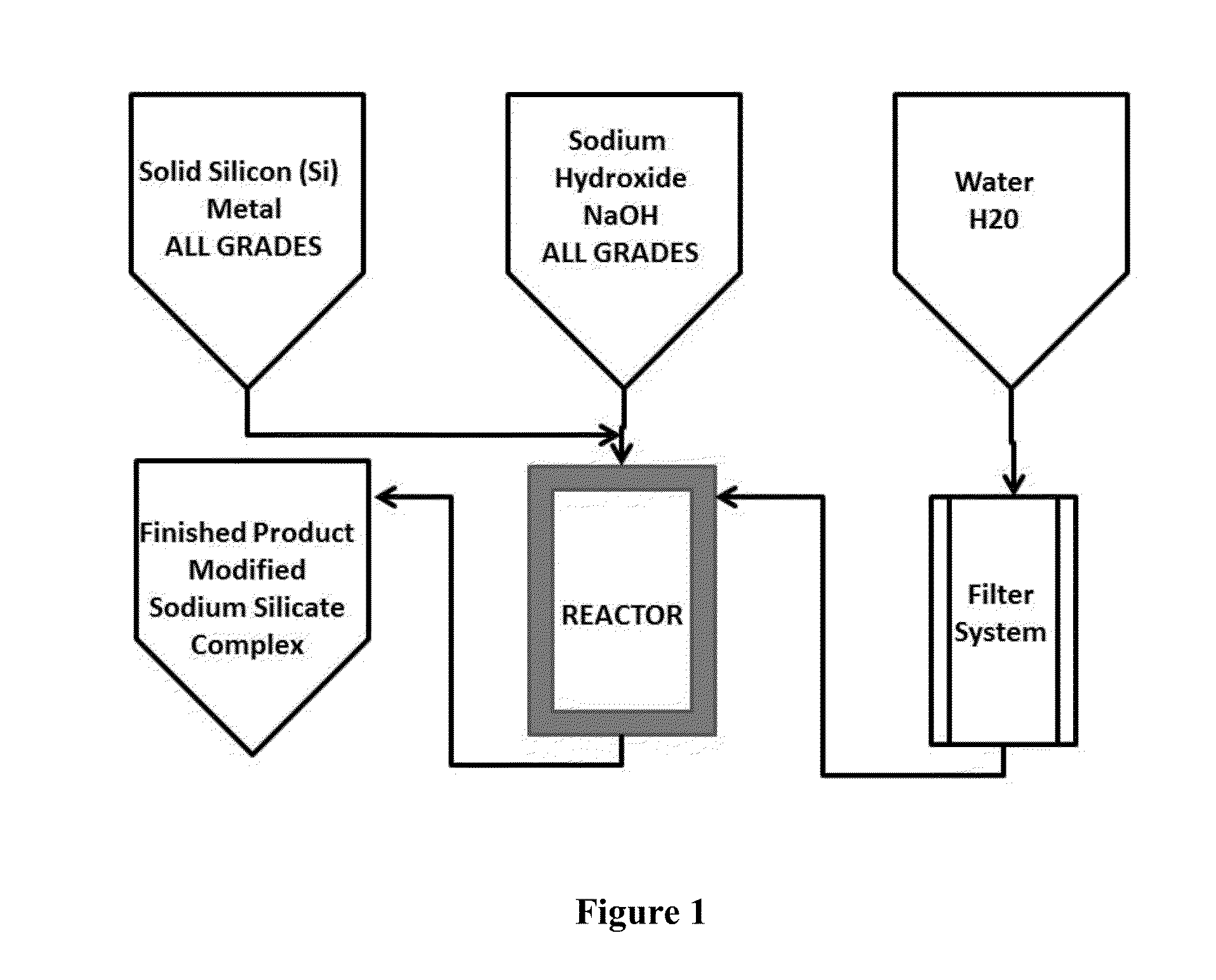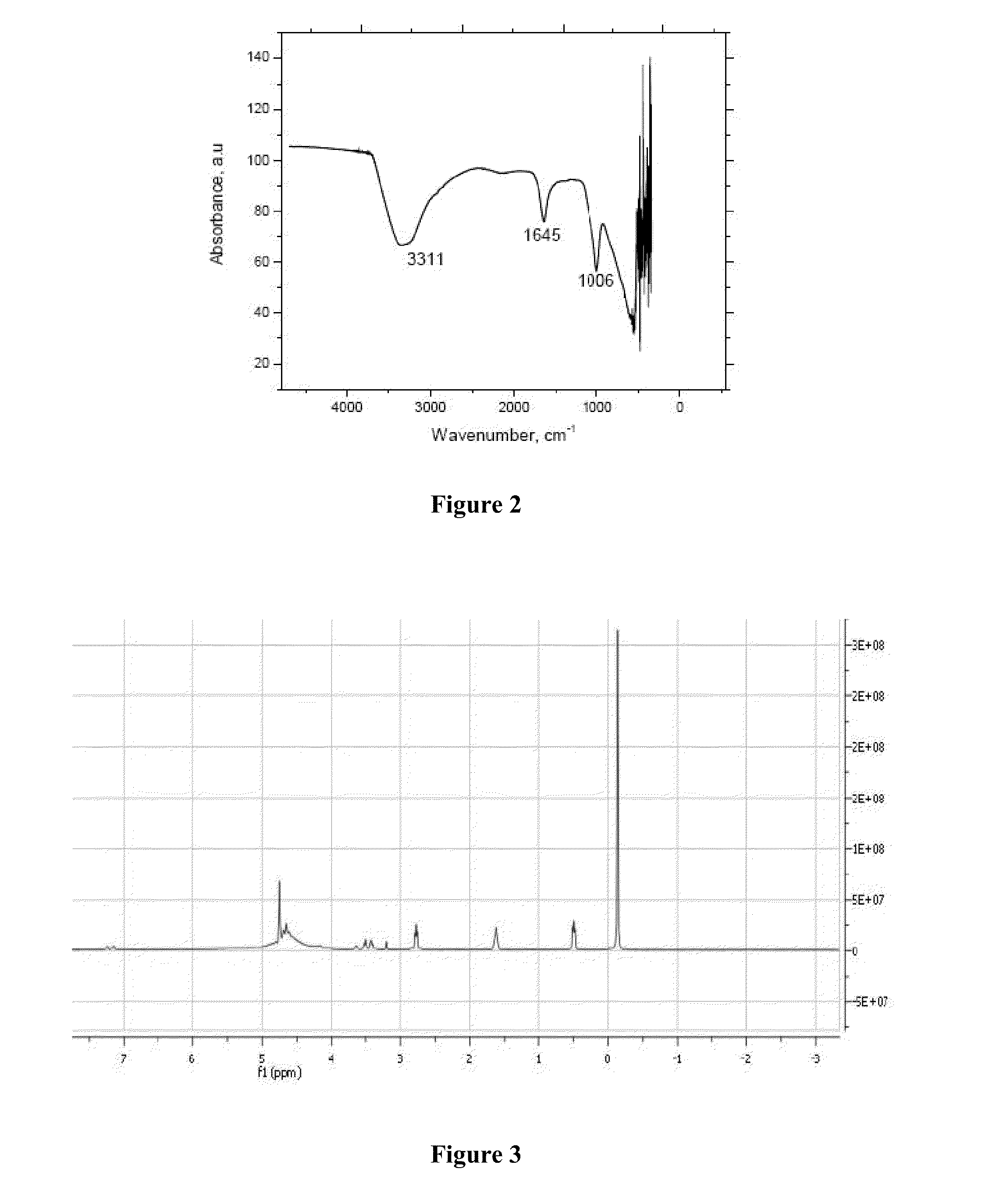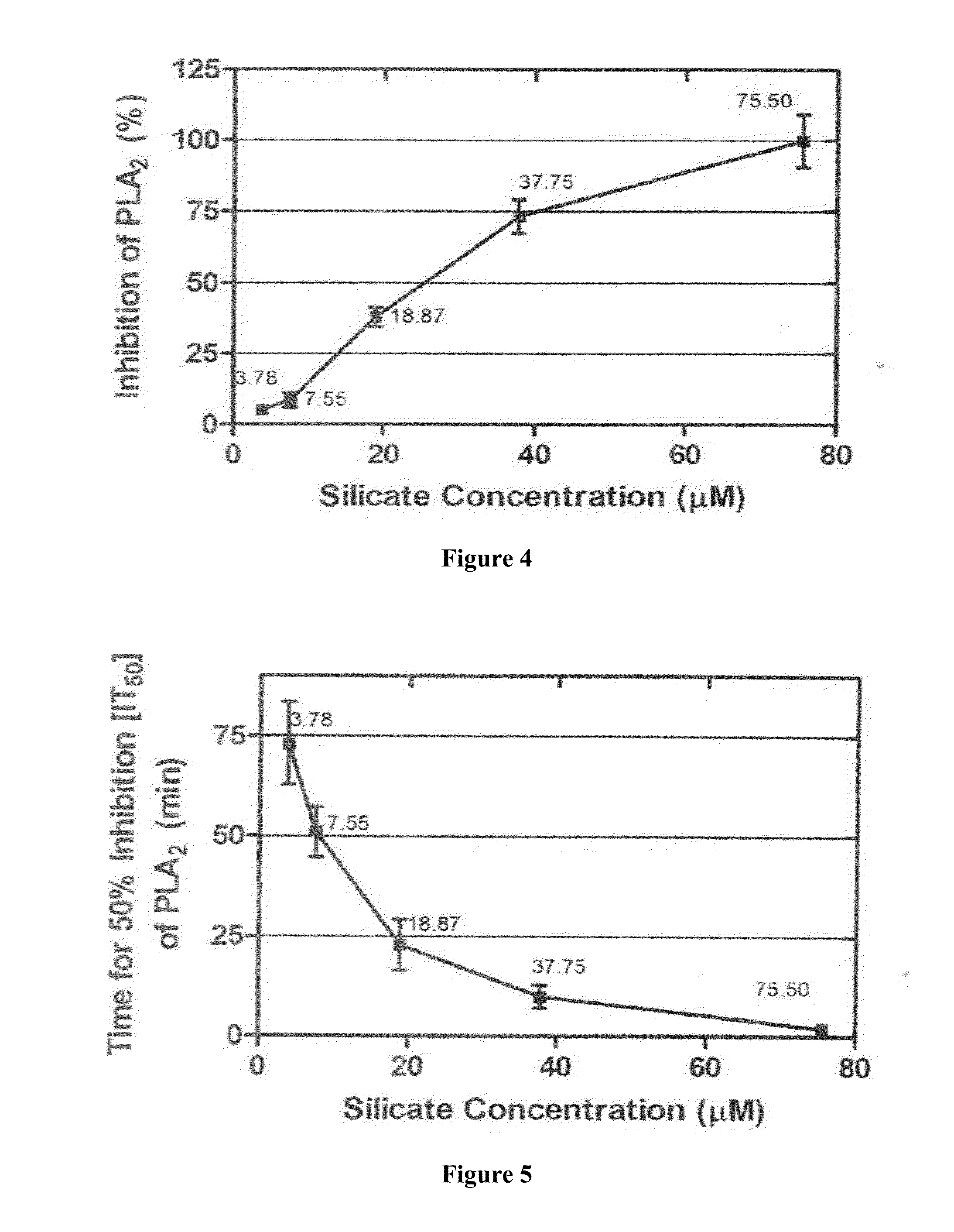Method for treating venomous bites and stings
a technology for applied in the field of venomous bites and stings treatment, can solve the problems of tens of thousands of deaths each year worldwide, toxic effects may be harmful to the cardiovascular, hematologic, nervous and/or respiratory systems, and harm to humans, and achieve the effect of inhibiting toxic effects and reducing local hemorrhage and tissue necrosis
- Summary
- Abstract
- Description
- Claims
- Application Information
AI Technical Summary
Benefits of technology
Problems solved by technology
Method used
Image
Examples
example 1
Production of Alkaline Sodium Silicate Complex (SSC)
[0071]The following describes a representative, but preferred, method for making SSC,
[0072]To make 10 gallons of SSC at 1.25 specific gravity, the following ingredients were used:
Initial amount of silicon rock46.7 poundsto start the reactionWater at 150° F. 5.5 gallonsSodium hydroxide at 50%2.05 gallons
[0073]In the reaction process for the first batch, the silicon rock was introduced into a 30 gallon reactor. Note: after the initial reaction, the amount of silicon rock that will be needed to start the reaction for a subsequent second batch and every other thereafter will be only 7.85 pounds.
[0074]Second, approximately half of the total volume of the heated water was added to the reactor.
[0075]Third, sodium hydroxide was added, while continuing to add the water.
[0076]Fourth, the remaining water was added.
[0077]Fifth, after all components are added to the reactor, an exothermic reaction occurred for 4 to 6 hours (for the first time b...
example 2
Effect of SSC on Three Different Types of Snake Venom Using Two Enzymatic Assays
[0082]Three snake venoms (Crotalus atrox, Western Diamondback; Agkistrodon contortrix contortrix, Southern Copperhead; and Agkistrodon piscivorus leucostoma, Western Cottonmouth) studied in this Example have numerous proteolytic enzymes in their venoms. Both gelatinase and hide powder azure assays are common methods used in screening venoms for proteolytic activities (Huang and Pérez, 1980; Rinderknecht et al., 1968). This study was designed to measure neutralization of gelatinase and hide powder azure activities in three snake venoms with SSC.
Methods
Antigelatinase Assay
[0083]A method modified from Sánchez et al. (2003) was used to test the antigelatinase activity of SSC. A 4 mg / mL amount of venoms of C. atrox, A. contortrix contortrix, and A. piscivorus leucostoma was pre-mixed with an equal volume of various dilutions of SSC in normal saline solution (sodium chloride, 0.85% (w / v)). The mixtures were th...
example 3
Effect of SSC on Components of Common Snake and Insect Venoms
Materials and Methods
Venoms and Toxins:
[0091]Venoms and toxins from snakes, scorpions, spiders, bees and wasps relevant to North America will be purchased from Sigma Aldrich (St. Louis, Mo.) and Fisher Scientific.
Anti-Phospholipase A2 Activity Assay
[0092]Phospholipase A2 (PLA2) activity was measured using an indirect hemolytic assay on agarose-erythrocyte-egg yolk gel plate to define the minimum indirect hemolytic dose (MIHD). The minimum indirect hemolytic dose (MIHD) of venom / toxin will be the dose that induced hemolysis halo having the diameter of 20 mm after incubation for 20 h at 37° C. SSC at various dilutions were tested against one MIHD of each venom / toxin. Test solutions and venom / toxin, 0.05 ml each, were pre-incubated for 1 h at 37° C. After centrifugation at 10,000×g for 10 min, the supernatant were tested for phospholipase A2 activity. The anti-phospholipase A2 potential of SSC is expressed as percent inhibiti...
PUM
 Login to View More
Login to View More Abstract
Description
Claims
Application Information
 Login to View More
Login to View More - R&D
- Intellectual Property
- Life Sciences
- Materials
- Tech Scout
- Unparalleled Data Quality
- Higher Quality Content
- 60% Fewer Hallucinations
Browse by: Latest US Patents, China's latest patents, Technical Efficacy Thesaurus, Application Domain, Technology Topic, Popular Technical Reports.
© 2025 PatSnap. All rights reserved.Legal|Privacy policy|Modern Slavery Act Transparency Statement|Sitemap|About US| Contact US: help@patsnap.com



